The Death of Sardanapalus Painting
 |
| The Death of Sardanapalus by Eugène Delacroix (1844) |
The Death of Sardanapalus Meaning in History
 |
| The Death of Sardanapalus Detail of the Assyrian King |
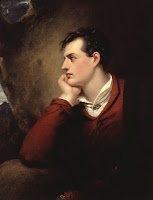 |
| Portrait of Lord Byron by Richard Westall (1813) |
The Death of Sardanapalus Analysis
 |
| American Gothic by Grant Wood (1930) |
Eugène Delacroix the Death of Sardanapalus Painter
 |
| Self-Portrait by Eugène Delacroix (1837) |
 |
| Portrait of Louis-Philippe I by Franz Xaver Winterhalter (1841) |
The Death of Sardanapalus Orientalism
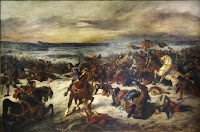 |
| The Battle of Nancy by Eugène Delacroix (1831) |
 |
| The Death of Sardanapalus Details of Elephant Head and Woman |
The Death of Sardanapalus Iconography
 |
| The Death of Sardanapalus Detail of Crouching Woman |
 |
| Crouching Woman by Eugène Delacroix (1827) |
 |
| The Death of Sardanapalus Details of Golden Jug and Chalise |
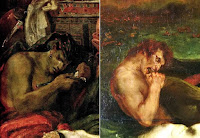 |
| The Death of Sardanapalus Detail of Wounded Man |
The Death of Sardanapalus Romanticism and Painting Technique
 |
| The Death of Sardanapalus Detail of Golden Ornaments |
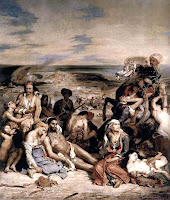 |
| The Massacre at Chios by Eugène Delacroix (1824) |
 |
| Liberty Leading the People by Eugène Delacroix (1830) |
 |
| The Oath of the Horatii by Jacques-Louis David (1784) |
 |
| The Third of May 1808 by Francisco Goya (1814) |
 |
| The Arnolfini Portrait by Jan van Eyck (1434) |
 |
| Wanderer above the Sea of Fog by Caspar David Friedrich (1818) |
The Death of Sardanapalus Story in Fine Arts
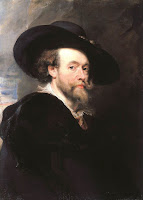 |
| Self-Portrait by Peter Paul Rubens (1623) |
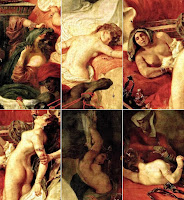 |
| The Death of Sardanapalus Details of the Women in Painting |
The Death of Sardanapalus Descriptions and Reactions
The Death of Sardanapalus, which was described as a
barbaric moment in its first exhibition, is considered one of Delacroix’s most
famous works, although it was not shown again for a long time until it’s been a
part of the Louvre Collection. At the first time that portrait of Sardanapalus
was exhibited at the Salon of 1828, it was criticized by a commentator as a
fanaticism of ugliness, according to quotations from the English novelist
Dorothy Bussy. American art historian Linda Nochlin stated that the reason why
the painting was criticized by Delacroix’s contemporaries and described as
ugly, was that it left an impression which destroyed the wall between the
Western World and the perception of Orientalism of the period. Although the
work was seen as a terrible and ugly chaos at first, its value was understood
by art community over time.
After the Death of Sardanapalus by Eugène Delacroix
 |
| Portrait of Cristina Trivulzio by Francesco Hayez (1832) |
 |
| Portrait of Louis Hector Berlioz by August Prinzhofer (1845) |
The Death of Sardanapalus 1827 Legacy and Dimensions
The Death of
Sardanapalus by Ferdinand Victor Eugène Delacroix has the unframed dimensions
of 73,70 × 92,60 cm (29,01 × 36,45 inches). After the death of the French
artist, the painting was inherited by Legrand, the lawyer and executor of
Delacroix’s will. With the death of the attorney, the romantic painting passed
under the assets of a French senator and art collector Prosper Crabbe. As
Crabbe was a stake broker trading French artworks of the 18th and 19th
Centuries, the famous painting soon changed hands and was sold for 70,000
francs at the 1873 Daniel Wilson Sale to Mr. Bellino. The only painting sold at
Wilson was the original painting of Eugène Delacroix made in 1827, which is oil
on canvas and in the collection of Louvre Museum of Paris, however there exists
some other individual owners, corporations or saloons between the years of 1892
and 1935, such as Galerie Georges Petit, Wildenstein & Co., Paul Rosenberg
& Co. and Henry Plumer McIlhenny. The famous romantic work has become a contribution to the art community with its rich characteristics and riot of color, as the elements that influenced successor artists regarding periods from Romanticism to Modernism.
The Death of Sardanapalus by Eugène Delacroix
 Reviewed by Articonog
on
June 28, 2022
Rating:
Reviewed by Articonog
on
June 28, 2022
Rating:
 Reviewed by Articonog
on
June 28, 2022
Rating:
Reviewed by Articonog
on
June 28, 2022
Rating:






No comments: